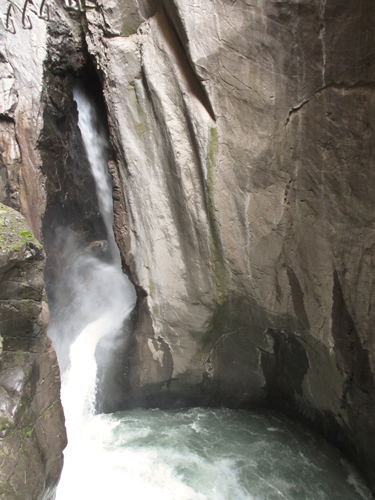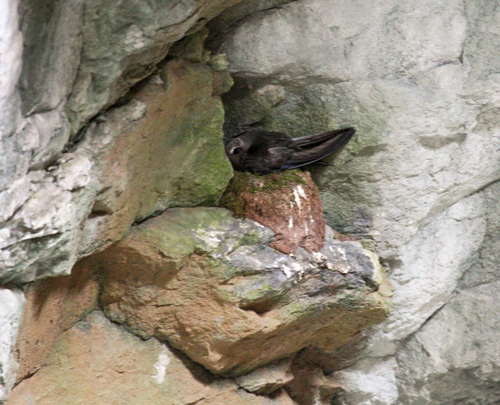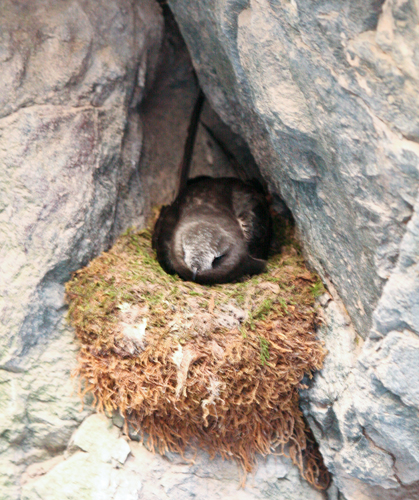The City of Ouray, Colorado bought the area now called Box Canyon Park a long time ago. Thanks to the City of Ouray. The Park is a little jewel. Upon entering Box Canyon, you will be awed by the sound of roaring water as the force of thousands of gallons per minute ricochet off a mix of rugged crags and smoothly eroded pre-Cambrian rock, rushing eighty feet to the canyon’s floor.

It also happens to be home to a colony of Black Swifts, in recent years, perhaps only 6 or 7 nesting pairs. The Park handout features a picture of a Black Swift on the cover, with the brief notation: “Summer home of the beautiful & rare Black Swift.”

Not only is the Park a jewel, and the Black Swifts a major attraction for birders, but Ouray (pronounced “Youray”), is a lovely mountain village and worth a summer visit for its own beauty.
I learned of the presence of Black Swifts at Ouray from an article in the September-October 2012 issue of Audubon Magazine, written by Alisa Opar. Anyone seeking information about the amazing Black Swift (its airspeeds can exceed 100 miles per hour, and it may remain in the air permanently except for the time spent nesting and raising young), should read that article.
At Ouray, Sue Hirshman has dedicated 18 years of her life to recording the daily activities of the Black Swifts who nest at Box Canyon Falls. She graciously agreed to meet us at the site on June 23, to help us locate the nests, eggs and hopefully, swifts, who were just beginning their reproduction cycle. I was, to re-coin an old phrase, “blown away” by the close-up views of the nesting Black Swifts, their nests and their eggs, at unexpectedly close range.

I had expected to find the Black Swifts at Ouray, but not to see them so well. Uniquely among North American swifts, the Black Swifts lay only a single egg. If that nest fails early, they may lay a second egg, but the long growing time (45 days) required to reach maturity may endanger late born swifts because of the arrival of cold weather in October.
My North American Life List grew to 733 with the addition of the Black Swifts. That leaves only 4 more ABA code 2 birds to add to my list: Sooty Grouse, Whiskered Auklet, Mottled Petrel and McKay’s Bunting (the latter 3 probably only to be found in Alaska or its waters). I will be working on this during the balance of this year.
